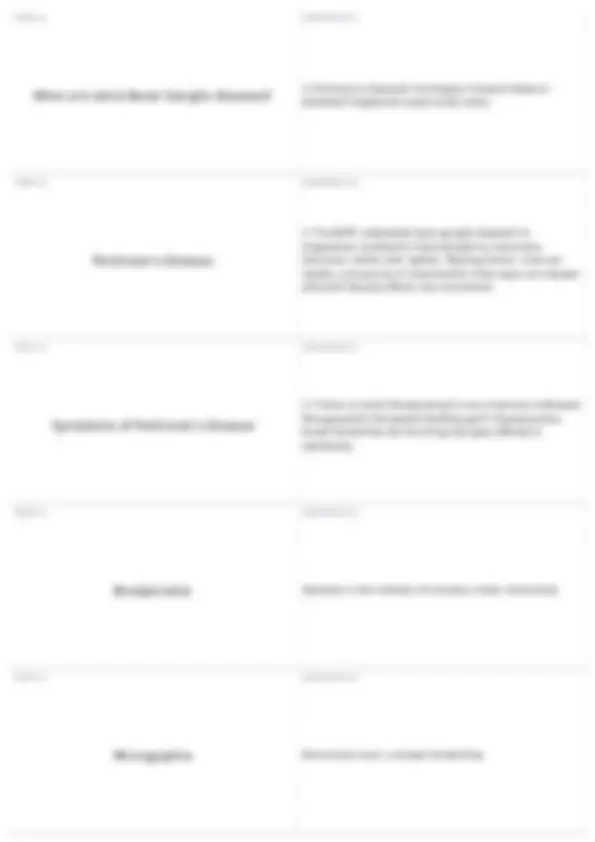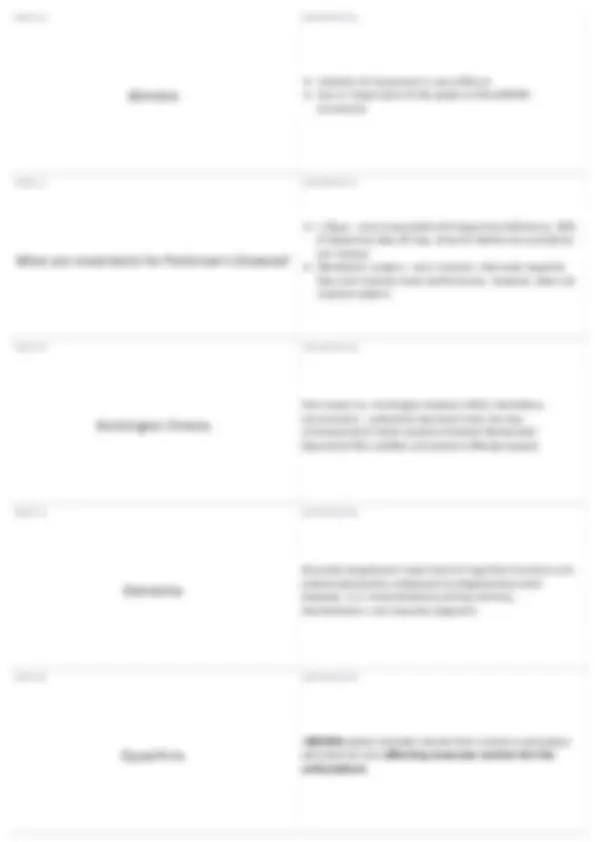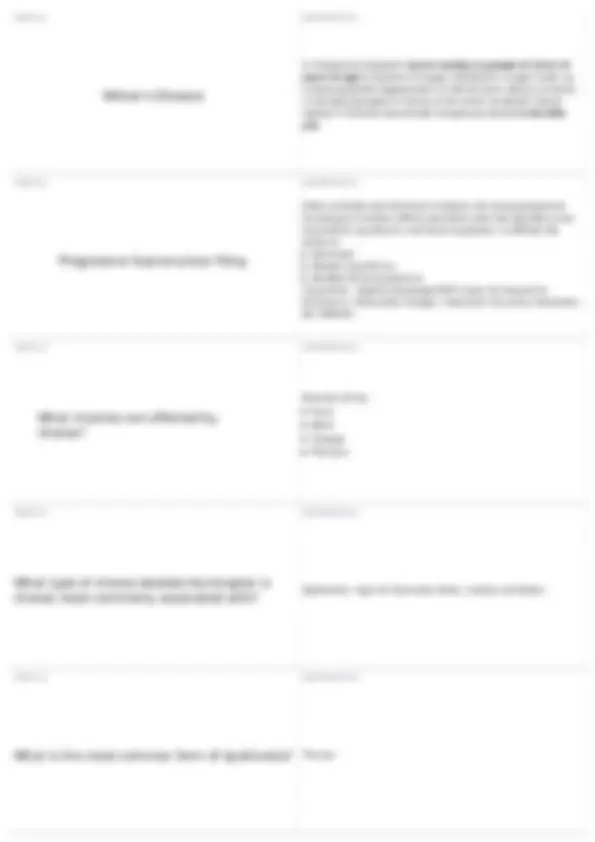





Study with the several resources on Docsity

Earn points by helping other students or get them with a premium plan


Prepare for your exams
Study with the several resources on Docsity

Earn points to download
Earn points by helping other students or get them with a premium plan
Community
Ask the community for help and clear up your study doubts
Discover the best universities in your country according to Docsity users
Free resources
Download our free guides on studying techniques, anxiety management strategies, and thesis advice from Docsity tutors
Definitions and descriptions of the basal ganglia, its role in movement regulation, types of dysfunctions such as athetosis, ballism, chorea, tremor, dystonia, and myoclonus, and associated diseases like parkinson's disease, huntington's disease, wilson's disease, and progressive supranuclear palsy.
Typology: Quizzes
1 / 7

This page cannot be seen from the preview
Don't miss anything!




Group of Subcortical nuclei (caudate, globus pallidus, and putamen) located within the white matter in each cerebral hemisphere. They play an important role in movement regulation. TERM 2
DEFINITION 2
DEFINITION 3
DEFINITION 4
DEFINITION 5 Brief rhythmic and jerky, yet graceful involuntary movements involving multiple muscles. Affects muscles of face, neck, tongue, andpharynx. Affects not only speech, but also swallowing. Muscles are hypertonic. Type - Huntington - adult onset Associated with Sydenham (post infectious condition in childhood, occurs months after strep)
DEFINITION 7 A movement disorder in which the ability to perform voluntary movements is impaired by the presence of involuntary movements. TERM 8
DEFINITION 8
DEFINITION 9 Extremely painful, chronic Neck involuntarily turns to the left, right, upwards, and/or downwards. Cannot move head in the other direction Requires physical therapy TERM 10
DEFINITION 10
Initiation of movement is very difficult loss or impairment of the power of VOLUNTARY movement TERM 17
DEFINITION 17 L-Dopa - since associated with dopamine deficiency, 80% of dopamine dies off (sig. amount) before any symptoms are noticed Stereotatic surgery - very invasive. Interrupts negative flow and improve motor performance, however, does not improve speech. TERM 18
DEFINITION 18 Also known as, Huntington disease (HD)1) Hereditary transmission - autosomal dominant (one non-sex chromosome)2) Adult onset3) Chorea4) Dementia5) Dysarthria*No cureMen and women affected equally TERM 19
DEFINITION 19 Acquired progressive impairment of cognitive functions and altered personality subsequent to degenerative brain diseases. It is characterized by failing memory, disorientation, and impaired judgment. TERM 20
DEFINITION 20
DEFINITION 22 Often confused with Parkinson's disease, this slowlyprogressive neurological condition affects brainstem cells that regulate ocular movements, equilibrium, and facial expression; it affectes the ability to: Move eyes Maintain equilibrium Manifest facial expressions -Dysarthria. -Rigidity-Dysphagia*Diff is does not respond to Parkinson's -Personality changes. Treatment. No known treatment.- NO TREMOR TERM 23
DEFINITION 23 Muscles of the Face Neck Tongue Pharynx TERM 24
DEFINITION 24 Sydenham -sign of rheumatic fever, mostly inchildren TERM 25
DEFINITION 25 Tremor